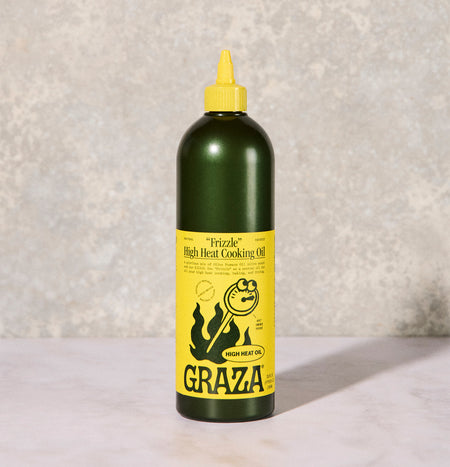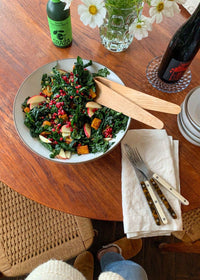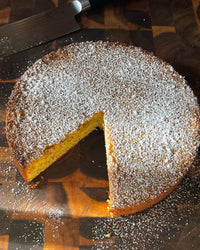
How to Make Your Friendsgiving Sustainable

Sourcing
While we’ll hold back from stating the obvious "you are what you eat," bringing sustainability into your meal begins with your ingredients. Where you buy what you buy matters, and we’re here to make it less daunting. Buying local and exploring options for getting your ingredients through CSA, or community supported agriculture, boxes is one simple way.
Resources like Local Harvest can help you find farms and CSA options in your area, and Misfit’s Market is another great option to not let produce go to waste for not being easy on the eyes. The National Farmer’s Market Directory is also an amazing resource for finding your local markets.
Easy Composting
Composting doesn’t have to be intimidating—it can instead become an easy final step in your daily cooking routine. Here we break down the simple way to reduce your food waste.
1. First things first—selecting your scrap storage. This stainless steel number is an easy start, or go for a minimalist OXO box. Or to avoid any potential bugs or odor, store them in a sealable plastic bag in your fridge or freezer.
2. What goes inside? We lay out exactly what qualifies for composting.

3. Now time to think about where these food scraps will go and become good earthy compost! If you live in a big city and are tight on space, drop-off composting is an easy way to put your trimmings to use. If you live in a city but still have big soil ambitions, don’t worry, there’s still hope! This is an easy guide to setting up a simple system using a five gallon box—or check out the Bokashi method. If lots of space isn’t your issue, you can spread out… any container will do, keep it simple. Did you know you can also make compost in a pile, with no box at all?
4. Make your mix! You’re going to want to start looking at your scraps through a green vs brown lens. Your greens are usually food scraps, rich in nitrogen and often “wet.” Your browns are often “dry” elements like old newspaper or dried leaves. As for the ratio, you generally want more brown than green—you can eyeball it, but a two to one or three to four ratio is what you’re looking for. The key is to layer your scraps with your greens on the top and browns on the bottom.
5. Tend to your compost. You should think of it as a living thing that needs care! You have to aerate your mix. Keep air flowing and mix it, with a spoon or stick, every week or so. In no time (about ~2 months) you’ll have compost!
Act Local
Fighting food insecurity begins in your own community. Simple actions like donating unused or leftover goods to shelters, food banks, and community fridges is an easy way to make room in your pantry ahead of the big day while making sure everyone is fed. You can find local community fridges near you here, and use this resource from Feeding America to find local volunteer opportunities.
Land Acknowledgements
Consider incorporating a land acknowledgement into your practice of giving thanks as a way to recognize existing Idigenous communities and the history behind this celebration. The Native Governance Center has put together a useful and step by step Guide to Indigenous Land Acknowledgements, beginning with a self-reflection, that provides more info on how and why.
You can also use resources like Native Land Digital, which features an interactive global map, to learn about the Indigenous lands on which we live today.
Put Your Leftovers to Use
Don’t let the big meal go to waste once dessert has been served. Our guide to Creating a Friendsgiving Menu with Leftovers In Mind is a good place to start—featuring everything from sleek, sustainable storage solutions from our pals at INKA to the ultimate reinvention of the leftovers sandwich.

















